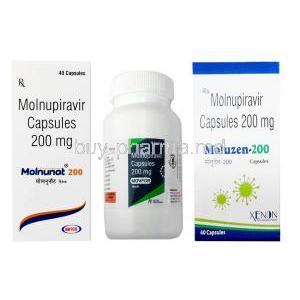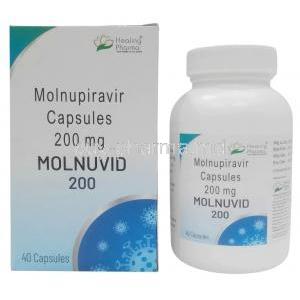Asiviral
- Introduction
- How Asiviral Works
- Dosage and Administration
- Uses of Asiviral
- Off-label Uses
- Composition
- Side Effects
- Common Side Effects
- Interaction
- Warning and Contraindication
- Careful Administration and Important Precautions
- Administration to Specific Populations
- Administration to Children
- Overdosage
- Storage and Handling Precautions
Introduction
Asiviral, a renowned name in the field of medicine, has established its reputation through research and development during the latter part of the 20th century. Its remarkable progress not only signifies significant advancements in antiviral treatments but also highlights its crucial role in today's medical landscape.
To truly understand how effective Asiviral is, we need to delve into its workings. Asiviral has been specifically designed to target the replication process of viruses, preventing them from multiplying within our cells. This intervention disrupts the life cycle of these entities containing them and eventually eliminating them.
- Mechanism of Action; The primary way Asiviral works is by inhibiting viral DNA polymerase, an enzyme crucial for the production of viral DNA strands. Duration of Effectiveness.
- Time until Results; Once taken, Asiviral starts working quickly, often within a few hours. Its effectiveness can last for a period of time, which makes it suitable for both immediate treatment and preventive measures.
Dosage and Administration
Determining the dose and administration schedule for Asiviral is extremely important to achieve optimal therapeutic results while minimizing side effects. The recommended dosages for conditions are as follows, although the exact dose may vary depending on the severity and type of infection;
- For herpes simplex infections; Take 200mg to 400mg orally every four hours, five times a day.
- For prophylaxis against herpes simplex, Take 200mg to 400mg orally four times a day.
- For varicella-zoster infections, Take doses up to 800mg five times a day.
Asiviral is typically administered in tablet form through intake. However, in cases, especially in patients with weakened immune systems, intravenous administration may be preferred.
Several factors need to be considered when determining the dosage of Asiviral. These factors include the patient's age, kidney function, and any concurrent illnesses or conditions they may have. It is crucial to take these variables into account when creating a treatment plan.
Asiviral is widely regarded as an antiviral medication. It brings a ray of hope to the field of therapeutics offering advantages in treating various viral diseases. Now let's explore its approved uses and compare its effectiveness with similar medications.
Approved Therapeutic Indications
Asiviral has established itself in fields of application, showcasing its remarkable effectiveness in the field of medicine. Through evaluation and numerous clinical trials highlighting its safety and efficacy, Asiviral is a valuable asset.
- It is used to combat infections caused by the Herpes Simplex Virus (HSV), ranging from minor cold sores to severe encephalitis.(1)

Herpes Simplex Virus Micrograph
- Additionally, Asiviral relieves the vesicular rash and neuralgic pain associated with chickenpox and shingles, which the Varicella Zoster Virus causes.(2)
- Moreover, for individuals with weakened systems, particularly those who have undergone transplants, Asiviral acts as a protective measure by reducing the risk of complications associated with Cytomegalovirus (CMV).(3)
1. NCBI - Clinical management of herpes simplex virus infections: past, present, and future
2. National Library of Medicine - Varicella zoster virus infection
3. PubMed - Cytomegalovirus infection in transplant recipients: newly approved additions to our armamentarium
Comparison with Other Medications in its Class
Asivirals impressive capabilities are undeniable. It is crucial to evaluate its position among other antiviral medications. When compared on the stage, how does it fare against its counterparts?
- Effectiveness: Asiviral excels in curtailing viral replication due to its sophisticated mechanism of action. It often surpasses medications by swiftly and effectively inhibiting viral growth. Its quick onset and lasting effects establish it as a leading contender.
- Side Effects: Like all medications, Asiviral has its drawbacks in the form of side effects. However, when compared to drugs, it boasts a relatively mild adverse effect profile. It causes gastrointestinal and neuropsychiatric manifestations.
- Pharmacokinetics: Asiviral's interactions with the body, including absorption, distribution, metabolism, and excretion processes, are remarkably efficient. This advantage in pharmacokinetics positions it above other antiviral medications.
In summary, Asiviral stands out among therapeutics with its wide range of approved uses and high regard among peers. It continues to play an expanding role in medicine by providing relief to numerous affected individuals.
Off-label Uses
The field of treatment often goes beyond the boundaries set by official labels. Medications, in addition to their approved uses, have applications within the complex realm of healthcare. Asiviral is an example known for its wide range of off-label uses. In this discussion, we will explore these off-label applications, examine the evidence supporting them, and carefully evaluate the associated risks and benefits.
Common Off-label Applications
Despite being focused on antiviral treatment, the adaptability of Asiviral has opened up a wide range of unconventional uses. Its versatile therapeutic nature allows it to be used in some conditions and diseases.
- Epstein-Barr Virus (EBV) Infections: Asiviral has demonstrated potential in attenuating the manifestations of this pervasive virus.
- Prophylaxis in Immunodeficient Scenarios: Asiviral acts as a bulwark against opportunistic viral infections in immunocompromised hosts.
- Refractory Viral Infections: Asiviral has shown promise as an alternative therapeutic recourse.
Evidential Support for These Uses
Medical practice grounded in evidence forms the foundation of modern healthcare. Therefore when it comes to off-label use, it is crucial to have a body of supporting evidence.
- EBV Infections: Some observational studies have suggested that Asiviral may be effective against EBV, although there remains a scarcity of randomized controlled trials.
- Prophylaxis; Anecdotal reports and preliminary trials have indicated that Asiviral may have benefits. However, conducting large scale studies is essential to establish its effectiveness
- Refractory Infections; Case reports and small studies on groups of patients have demonstrated positive outcomes with Asiviral, particularly in cases where conventional treatments have proven ineffective.
Risks and Benefits of Off-label Administration
When doctors go beyond the approved uses of medications, they need to weigh the benefits against the risks. Off-label use can open up treatment options that would otherwise be unavailable. It allows doctors to customize treatments in difficult or unique medical situations.
However, there are risks involved in using medications off-label. These applications may not have undergone testing like approved uses. There could be side effects, interactions with other drugs, and challenges in finding the right dosage. It's important to consider factors when using medications off-label.
Informed consent is necessary, which means explaining the risks and benefits to patients so they can make their own decisions about their treatment.
In conclusion, using medications like Asiviral off-label shows medical treatments constantly evolve. While there are possibilities for success, it's crucial to proceed with caution and prioritize evidence-based approaches that focus on the needs of patients.
Composition
In the world of pharmaceuticals, every medication is meticulously formulated with a blend of ingredients to maximize effectiveness and ensure safety. Now let's delve into the composition of Asiviral, exploring both its active and inactive components.
Active and Inactive Ingredients
The effectiveness of Asivirals therapy lies in its active component. This crucial ingredient works together with a group of ingredients that are not directly involved in fighting viruses but are important for delivering the drug and maintaining its stability.
Active Ingredient;
- Asivirumine. This is the antiviral agent responsible for the drug's ability to combat various viral pathogens.
Inactive Ingredients;
- Microcrystalline cellulose; This ingredient helps to maintain the integrity of the tablet by providing bulk.
- Magnesium stearate; It acts as a lubricant during tablet manufacturing.
- Polyethylene glycol: This additive improves the dissolution and absorption of the drug.
Forms Available
Asiviral understands the needs of people and offers a range of options to cater to different situations. Tablets are available in strengths for easy oral intake and dosage adjustment.
If swallowing is challenging or for use, a liquid suspension can be used as an alternative. Additionally, there is an ointment specifically designed for direct application on affected areas of the skin.
Side Effects
Every time we use medication, it's crucial to strike a balance between the desired effects and any potential drawbacks. Understanding the difference between rare side effects, as well as the various factors that affect how often they occur, is essential.
Explanation of the Difference Between Common and Rare Side Effects
Side effects, which are an aspect of taking medication, are classified according to how often they occur. Common side effects are those that appear in a portion of the population. On the other hand, rare side effects are infrequent and affect only a few individuals.
Factors Influencing Side Effect Prevalence
- Genetic Inclination: Differences in our composition can impact how our bodies metabolize and react to medications.
- Dosage Patterns: When higher doses are administered, there is often a likelihood of experiencing side effects.
- Coexisting Medications: The presence of drugs can affect how Asiviral is processed and its overall effectiveness.
- Existing Health Conditions: Certain medical conditions can make individuals more prone to experiencing side effects.
Common Side Effects
Recognizing the challenges often linked to Asiviral allows for swift acknowledgment and timely intervention.
List and Brief Description of Frequent Side Effects
- Gastrointestinal Issues: Symptoms may include feeling nauseous, vomiting, and experiencing discomfort in the abdomen.
- Headaches: Mild to headaches that are usually temporary in nature.
- Skin irritation; itchy skin rashes that may occasionally be accompanied by hives.
Managing and Mitigating These Effects
Taking measures can help lessen the intensity and duration of typical side effects.
- To address Gastrointestinal distress, it is advisable to take Asiviral after meals or alongside antacids as this can alleviate symptoms.
- For headaches using over-the-counter pain relievers, in moderation, can provide relief.
- In the case of a rash, applying corticosteroids and using antihistamines may help soothe any skin-related adversities.
Interaction
Interactions play a role in drug pharmacology as they can involve possible conflicts with other medications, dietary elements, and pre-existing health conditions.
Potential Drug-Drug Interactions
When certain antiretroviral medications are taken together with Asiviral, it can affect how Asiviral works. Additionally, if you take drugs that inhibit the P450 pathway, it can increase the amount of Asiviral, in your bloodstream.
Food and Alcohol Considerations
Excessive consumption of alcohol can increase the risk of liver damage associated with Asiviral. Consuming meals high in fat may slow down the absorption process, affecting how the drug is processed in the body.
Interaction with Underlying Medical Conditions
Certain medical conditions can impact the effectiveness and potential side effects of Asiviral.
- If someone has kidney problems, it may affect how Asiviral is eliminated from their body, requiring adjustments to the dosage.
- Additionally, individuals with liver issues might experience metabolism of Asiviral, so it's important to closely monitor them.
Warning and Contraindication
While Asiviral continues to be a tool, in treating specific viral infections it is important to understand the situations where its use may not be recommended. Recognizing these contraindications can greatly impact the success of therapy. Help avoid any potential negative outcomes.
For individuals with liver problems, it's important to be cautious when using Asiviral. This is because Asiviral is mainly broken down in the liver, and if the liver isn't functioning well, there is a risk of the drug building up in the body and causing harm.
If you have had any reactions in the past to Asiviral or its components, it's essential to avoid taking it again as it can be dangerous. It's also important to consider medications you may be taking alongside Asiviral.
Some drugs can interact with Asiviral either by inhibiting its effects or enhancing them, which can affect its safety profile.
Potential Risks of Ignoring These Contraindications
Neglecting to follow contraindications can result in a range of complications, from mild issues to serious and life-threatening situations.
- Not paying attention to known allergies can lead to reactions throughout the body requiring immediate medical attention.
- Individuals with liver conditions may experience worsened liver function or even acute liver failure due to drug-induced hepatotoxicity.
- Additionally, combining Antiviral drugs that are contraindicated can enhance or weaken its effectiveness or increase its potential side effects.
Careful Administration and Important Precautions
While Asiviral shows promise as a therapy it is important to approach its administration with caution. This should be accompanied by monitoring and a keen ability to recognize any unexpected side effects or complications.
Monitoring Requirements During Treatment
Regularly evaluating liver function tests helps in identifying indications of liver damage. Monitoring renal function parameters is crucial to prevent the buildup of drugs and potential harm to the kidneys. Keeping an eye on profiles enables early detection of any blood cell count abnormalities, thus helping to anticipate potential hematologic complications.
Important Signs or Symptoms to Watch For
Recognizing the indications of negative reactions is important as it enables prompt interventions to minimize any potential consequences. If you notice your skin or eyes turning yellow it could suggest a problem with your liver. Feeling tired without a reason might be a sign of blood or liver issues. Any changes in urine output or color could potentially indicate kidney problems or the presence of blood, in the urine.
Administration to Specific Populations
Administration to the Elderly
As people grow older, their bodies undergo changes that can affect how medications work. This means that when it comes to treating individuals, healthcare professionals need to develop personalized treatment plans that take into account these unique factors.
Dose Adjustments and Considerations
- Renal Function: The decline in kidney function that occurs with age may require adjusting the dosage of Asiviral.
- Drug Metabolism; The way the liver metabolizes medications may be affected in individuals, which could impact how Asiviral is processed in their bodies.
- Concomitant Medications; Since older adults often take medications it is important to carefully review them to avoid any harmful interactions, with Asiviral.
Potential Heightened Side Effects or Risks
Elderly individuals may experience a likelihood of certain side effects, emphasizing the need for careful monitoring. Digestive disturbances such as nausea, vomiting, or constipation may be more prevalent. There is also an increased risk of dizziness, confusion, or falls in relation to the nervous system. Additionally, there could be drug interactions or existing cardiac conditions that may lead to cardiac arrhythmias.
Administration to Pregnant Women and Nursing Mothers
The physical changes that occur during pregnancy and breastfeeding require attention to protect both the mother and the child.
Known Risks to Fetus or Infant
Teratogenicity; The possibility of birth defects due to the impact of Asiviral on the development of the fetus.
Exposure to Medication in Newborns; If Asiviral is found in breast milk, it could potentially expose the nursing baby to its effects.
Recommendations During Pregnancy or Lactation
Although there may be situations where the advantages of using outweigh the risks it is important to follow certain guidelines to prioritize the safety of both the mother and the baby. During pregnancy, it is recommended to use Asiviral if the potential benefits outweigh any potential risks to the fetus.
Ideally, it is best to avoid using this medication during the trimester. In case Antiviral administration is necessary while breastfeeding it should be carefully considered whether to discontinue nursing or stop taking the drug. The decision should take into account both its importance, for the mother and any potential risks it may pose to the infant.

Pregnant Woman
Administration to Children
When it comes to treating children with medication we need to be extra careful because their bodies work differently from adults. Although Asiviral can be helpful, for pediatric conditions it's important to give the right dose based on their age and carefully monitor its use.
Age-specific Dosing and Considerations
- Newborns; Due to their organs being underdeveloped the amount of medication administered is typically kept at a minimum with a focus on monitoring.
- Babies (1 month to 12 months); As they grow older, the dosage Still remains significantly lower than what adults would receive. This takes into account the maturation of their liver and kidneys.
- Young children (1 5 years); The dosage can be adjusted based on their body weight and surface area often using forms of medication for easier administration—school age.
- Teenagers (6 18 years); The dosage gradually aligns with that of adults. It is important to consider individual factors, such as developmental milestones and organ function, for a patient-centered approach.
Pediatric-specific Side Effects or Precautions
Younger individuals may experience a range of side effects compared to adults. These could include an increased likelihood of experiencing issues such as nausea, vomiting, or diarrhea.
Additionally, younger people might show noticeable neurological symptoms like irritability, difficulty sleeping, or having nightmares.
It is important to monitor growth parameters and developmental milestones when administering medication over a long period to younger individuals.
Overdosage
Using Asiviral beyond recommended limits can lead to negative effects, on your health. It is crucial to identify, intervene, and prevent situations to ensure positive outcomes and avoid any harmful consequences.
- Neurological Symptoms: Patients might experience tremors, seizures, and sudden confusion.
- Heart-related Signs: Rapid heartbeat, palpitations, and possible irregular heart rhythms could be observed.
- Digestive Discomfort: Intense nausea, vomiting, and significant abdominal pain may be prominent in the presentation.

Nausea
Steps to Take in Case of Suspected Overdose
Seeking medical attention is crucial to ensure thorough medical care. It is important to hospitalize the individual for comprehensive management.
To minimize the absorption of any medication, gastric lavage may be performed. This procedure helps evacuate the medication from the stomach.
Addressing and stabilizing symptoms as they arise is an essential part of managing the condition.
From providing hydration to administering antiseizure medications, symptomatic management plays a role in ensuring proper care and stability.
Long-term Ramifications
While prompt actions can help alleviate risks, there may be long-term consequences following an overdose. Damage to organs such as the liver, kidneys, or heart could occur with prolonged exposure. Additionally, after recovery, individuals might experience cognitive difficulties or mood changes.
Storage and Handling Precautions
Maintaining the effectiveness of Asiviral as a treatment while minimizing any risks requires careful storage and handling methods.
Ideal Storage Conditions for Potency
To maintain the medication's effectiveness, it is important to store Asiviral in a dry place ideally between 15-25°C. Make sure to keep it from high humidity levels as this can cause the active ingredients to degrade.
Shielding the medication from light by storing it in a place or keeping it in its original packaging also helps prevent any degradation caused by exposure to light.
Expiry Considerations
As medications get older their effectiveness and safety may decrease over time. Adhering to the expiration date is important to ensure you receive the therapeutic benefits and maintain safety. Keep an eye out for any changes in appearance, such, as discoloration, sedimentation, or a different smell. These could be signs that the medication's quality has been compromised.
Safe Disposal of Unused or Expired Medication
To prevent pollution and accidental ingestion, it is crucial to implement proper methods of disposing of medications.
- One option is to utilize Drug Take Back Programs, which are community or pharmacy-based initiatives that ensure environmentally safe disposal.
- Another approach is to mix the medication with an unappealing substance, such as coffee grounds, and dispose of it in a sealed bag with household trash.
- Flushing down the toilet should only be considered for medications explicitly mentioned in the FDA-approved list.
























